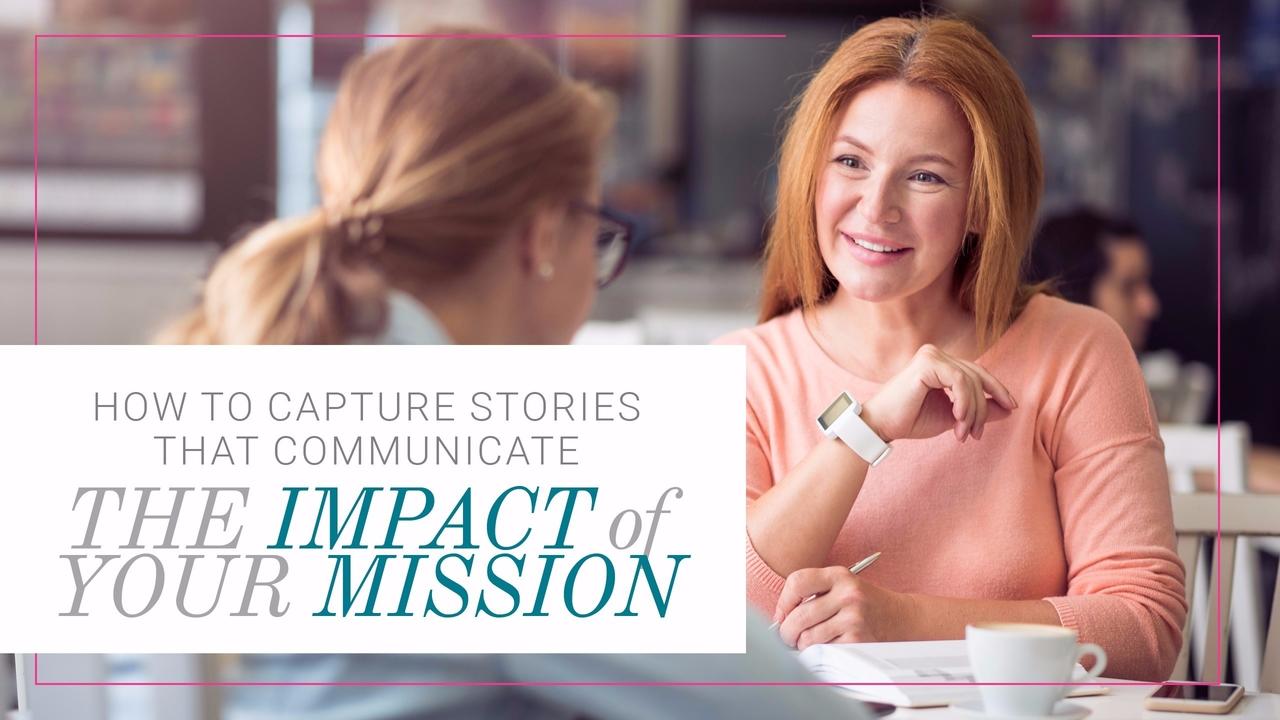How to Capture Stories that Communicate the Impact of your Mission
Jul 24, 2017
When telling your nonprofit’s story - in a speech, on your website or even as part of a grant proposal – there’s a temptation to stick with statistics. How many people you’ve helped, how much you’ve raised, how far you’ve come – your organization has made progress and you’ve got the numbers to prove it!
Don’t get me wrong, you should be super proud of your organization’s success and those statistics are worth celebrating.
But, there is a bit of a problem.
Numbers, no matter how impressive, are not very emotionally compelling.
Facts and stats just don’t have that special “pull” that resonates with people. And, honestly, they aren’t why you founded or lead your nonprofit organization anyway.
It’s the stories of people – people in need, people you’ve helped, people who now enjoy better lives - that brought you into the world of nonprofits.

They are what drive your (and other people’s) emotions. If you try to think about all those in need of help in the world, you can get quickly overwhelmed and feel hopeless about making a difference. Focus on one person that embodies that need, and it is much more likely people will be moved to engage, volunteer or support your cause.
We are born storytellers – it’s part of the human DNA. Anthropologists tell us that every known culture relies on storytelling to communicate important information, share common history and values, and bring people together.
Plus, we remember the stories long after the numbers have flown out of our heads. According to Jennifer Aaker, a behavioral psychologist and marketing professor at the Stanford Graduate School of Business, we are 22 times more likely to remember a story than facts alone.
But sharing a client’s story is both a rewarding and delicate matter. How you handle your interview with your client will make all the difference in getting the powerful details that communicate the impact of your mission, and make his or her story interesting and relatable.
I know some of you reading this might be thinking: I understand the need for telling stories, but I don’t want to feel that I’m using my clients. I’m here to serve them, not exploit them.
That’s absolutely correct, but part of respecting your clients is realizing they have something to contribute. Susan Ellis, the president of Energize Inc., a consulting firm specializing in volunteerism, wrote a great piece on this called “Receive and Give” for The NonProfit Times.
“If we work in mission-driven organizations, we should be trying to meet as many client needs as we can,” Ellis wrote. “That means going beyond the old model of ‘charity,’ in which those who have so much give to those who have so little. We should look to the receivers of our services also as potential givers — contributors to the services we provide.”
One of the ways current or alumni clients can contribute is by sharing their stories. By helping you help others, your clients are now partners in your mission. Far from exploiting them, the process empowers them by making them spokespeople for the cause.

